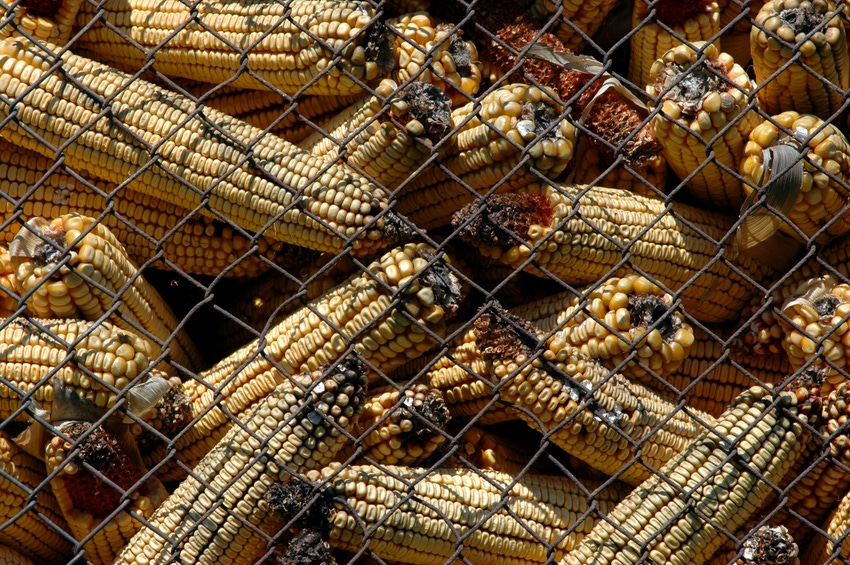- Nutrition & Health
- Market News
- Poultry Health and Nutrition
- Swine Health and Nutrition
- Dairy Health and Nutrition
Biomin to host webinar on worldwide survey Feb. 26.
February 19, 2019

Fumonisins are still abundant at high concentrations in raw commodities, according to results from the latest annual "Biomin Mycotoxin Survey."
“In recent years, fumonisins proved to be the most prevalent mycotoxins globally among the major agriculturally relevant mycotoxins, which also include aflatoxins, zearalenone, deoxynivalenol (DON), T-2 and ochratoxin A,” said Alexandro Marchioro, product manager for mycotoxin risk management at Biomin.
In 2018, 68% of samples analyzed tested positive for fumonisins; corn (maize), in particular, has been subjected to effects from these mycotoxins, Biomin said.
Fumonisins — produced by Fusarium proliferatum and Fusarium verticilloides — predominantly contaminate corn and corn byproducts. These molds are also responsible for producing the second-most commonly found mycotoxin, DON, also known as vomitoxin, Biomin said.
Trends in different regions
“The shift in the composition of the mycotoxin threat is noticeable when comparing data sets over the years. Additionally, the co-contamination of mycotoxins is a considerable point we should bear in mind,” Marchioro said.
Biomin pointed out that mycotoxin risk varied by region in 2018, such as:
* In North America, DON was the most prevalent, reaching 67% of total samples with an average of 735 parts per billion.
* In Asia, 96% of corn samples tested positive for fumonisins with maximum concentrations of 47,485 ppb. Aflatoxin remains a topic in Asia, with 44% of prevalence in finished feed.
* In Argentina, the average concentration of fumonisins rose from 2,800 ppb in 2017 to 4,762 ppb in 2018.
* In Europe, the most prevalent mycotoxin was DON.
“These data underscore the importance of monitoring mycotoxin contamination, as mycotoxin occurrence varies in different regions,” Marchioro explained.
Live webinar and survey results
On Feb. 26, Biomin and sister company Romer Labs will host a live webinar on the "World Mycotoxin Report," with special attention to the possible impact of these mycotoxins on animals and feed producers in 2019, the potential of multi-mycotoxin analysis and innovative technologies for mycotoxin deactivation.
Two online sessions are offered in order to facilitate participation from various time zones, and the webinar is free to attend. Online registration is required at www.biomin.net. Webinar attendees will be the first to receive the 2018 "Biomin Mycotoxin Survey" report.
Survey details
Its annual mycotoxin survey constitutes the longest-running and most comprehensive survey of its kind, Biomin said. The survey results provide insights into the incidence of the six major mycotoxins in the chief agricultural commodities used for livestock feed in order to identify the potential risk posed to livestock animal production.
Source: Biomin, which is solely responsible for the information provided and is wholly owned by the source. Informa Business Media and all its subsidiaries are not responsible for any of the content contained in this information asset.
You May Also Like



